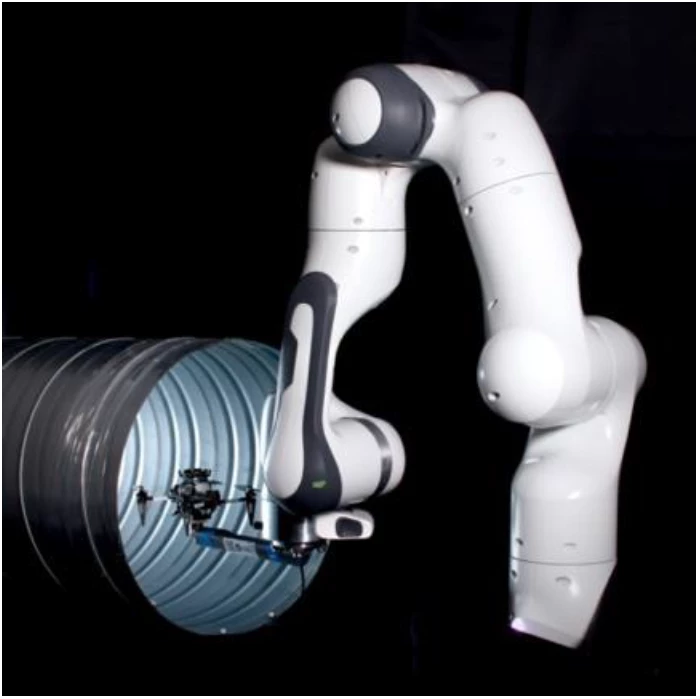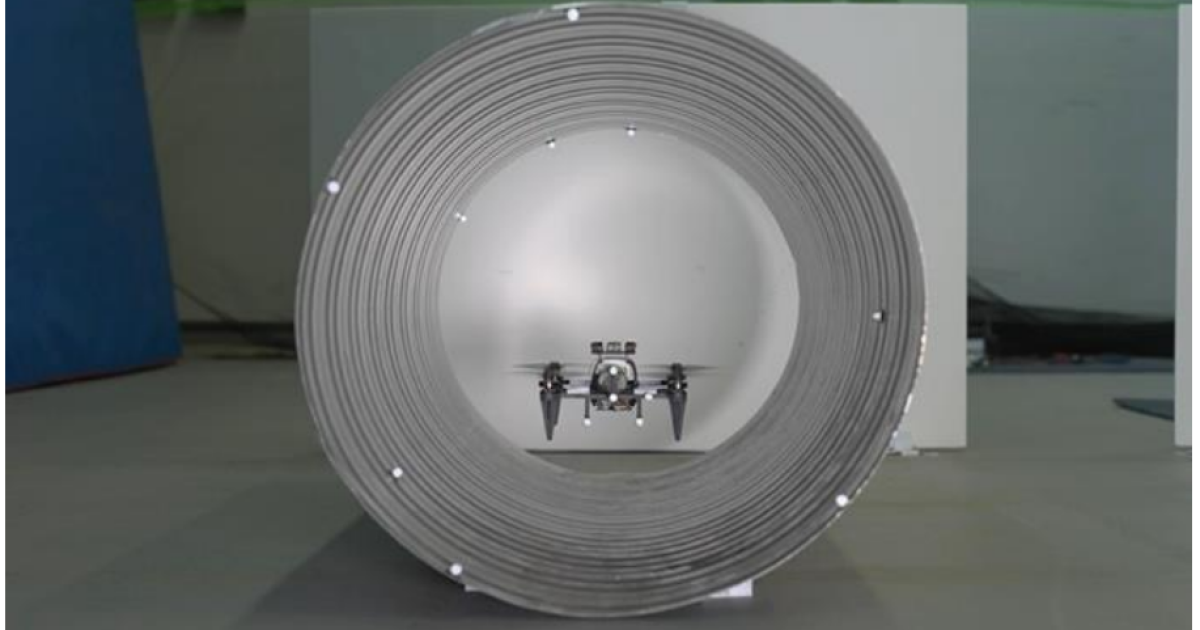Drones are going full Die Hard as researchers from Inria, CNRS, the University of Lorraine, and Aix-Marseille University work on how to help quadcopters fly through ventilation ducts without getting lost or banging into the walls like a bean in a can.
As anyone who has seen Bruce Willis’s famous Christmas movie can tell you, moving about in ventilation shafts is really difficult, but sometimes it’s something you have to do when you’re trapped in a skyscraper full of terrorists. You also have to do it if you’re a drone built for inspecting air shafts or doing reconnaissance for military, police, or rescue missions.
The problem is that shafts are small, dark, enclosed spaces where everywhere looks like everywhere else. That means it’s very hard to navigate. Worse, being inside a closed cylinder means that a quadcopter is going to produce all sorts of currents that could send the drone smashing into the walls, which is never good.

Inria / G. Destombes
To deal with this, a team led by Inria research director Jean-Baptiste Mouret is looking at how to make it easier for quadcopters to handle ducts with a diameter of about 14 in (35 cm). To do this, the team used a robotic arm equipped with a force and torque sensor to measure air flow in hundreds of spots inside a short model duct to build up a map that shows the unstable danger points in a circular duct and safer ones where the air currents cancel one another out.
In addition, the team studied how to use lasers and AI to help drones to navigate in a duct’s pitch-black, near-featureless environment. In this way, it was possible for the drone to fly about with more stability and less banging into things.
According to Inria, the next step will be to build a prototype drone that will include cameras, thermal imagers, or gas sensors to allow it to do useful inspection work.
Now if they only get it to shout a certain variation on “Yippee-Ki-Yay,” they might be on to something.
The research was published in NPJ Robotics.
Source: Inria

